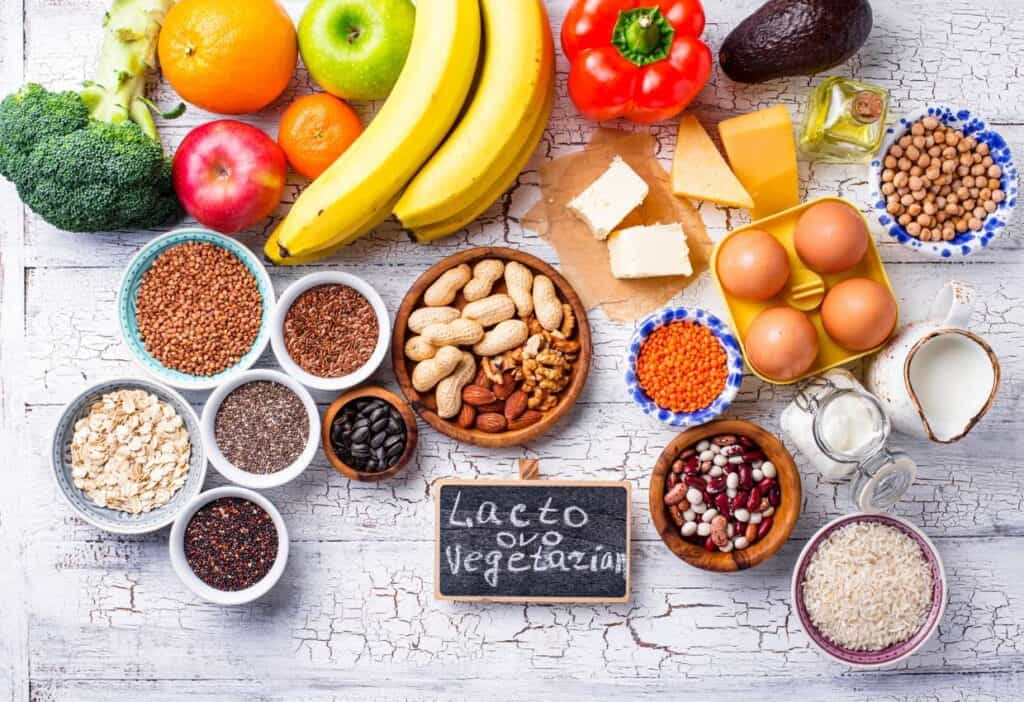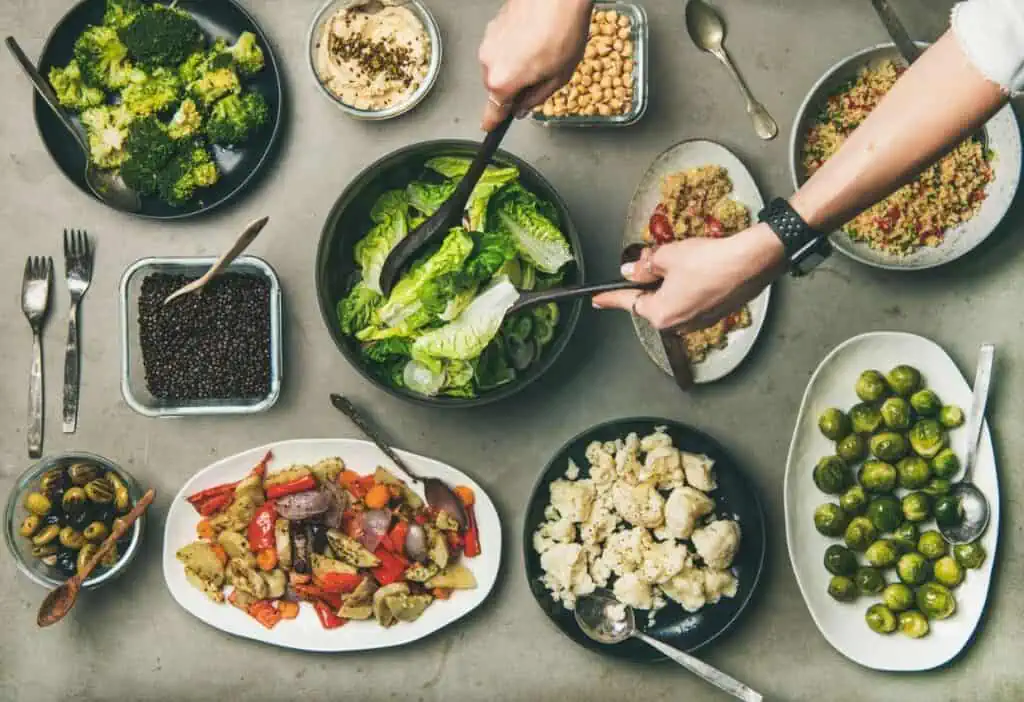Discover the various types of vegetarians and their unique dietary choices with this ultimate guide. From flexitarians to vegans, explore the different types of vegetarians and what they eat.

People choose to become vegetarians for various reasons, including ethical, environmental and health concerns. There are many different types of vegetarians, each with unique dietary restrictions and preferences.
Understanding the different types of vegetarians can be helpful for those considering adopting a vegetarian lifestyle or those who cook for vegetarians. Knowing every kind of vegetarian’s dietary restrictions and preferences makes it easier to meet everyone’s nutritional needs.
Understanding vegetarianism
Vegetarianism is a dietary lifestyle that involves abstaining from eating meat, fish and poultry. There are different types of vegetarians, each with their unique dietary restrictions. For instance, some vegetarians consume dairy products and eggs, while others do not.
Vegetarianism is often associated with ethical and environmental concerns. Many become vegetarians because they do not want to contribute to animals’ suffering or the meat industry’s ecological impact.
It is important to note that being a vegetarian does not automatically mean that a person is healthy. It is still possible to consume an unhealthy diet high in processed foods and low in nutrients while following a vegetarian diet.
Overall, vegetarianism can be a healthy and ethical choice for many individuals. Still, ensuring that the diet is balanced and provides all necessary nutrients is important.
Types of vegetarians
Here are some of the most common types of vegetarians and the differences in what they do and don’t eat.
Lacto vegetarian
A lacto vegetarian does not eat meat, fish or eggs but does consume dairy products such as milk, cheese and yogurt. This type of vegetarianism is popular in India and other parts of Asia.
Ovo vegetarian
An ovo vegetarian does not eat meat, fish or dairy products but does consume eggs. This type of vegetarianism is often adopted by people who want to reduce their consumption of animal products but still want to get the nutrition that eggs provide.
Lacto-ovo vegetarian
A lacto-ovo vegetarian does not eat meat or fish but consumes dairy products and eggs. This is the most common type of vegetarianism in the Western world.
Flexitarian
A flexitarian is someone who largely follows a vegetarian diet but occasionally eats meat or fish. This type of diet is also known as semi-vegetarian.
Vegan
A vegan is someone who does not consume any animal products at all, including meat, fish, dairy, eggs or honey. This type of vegetarianism is often adopted for ethical or environmental reasons.
Pescatarian
A pescatarian does not eat meat or dairy products but does consume fish. This diet is often adopted by people who want to reduce their consumption of animal products but still want to get protein from fish.
Whether you are a lacto vegetarian, ovo vegetarian, lacto-ovo vegetarian, flexitarian, vegan or pescatarian, there are plenty of delicious and nutritious foods to enjoy.
“As someone living with alpha-gal syndrome, a tick-borne food allergy to mammalian meat, understanding the different types of vegetarian diets helps me navigate ingredient lists and restaurant menus and communicate with chefs to avoid allergy triggers. For example, an ovo-vegetarian diet — one that excludes all animal-based foods except eggs — is safe for nearly all alpha-gals. Because I’m now once again able to consume dairy products, I follow a pescatarian diet.”
— Sage Scott, Sage Alpha Gal

Vegetarian diets and nutrition
Vegetarian diets can provide all the necessary nutrients for a healthy lifestyle. Still, it is important to plan meals carefully to ensure adequate protein, iron, calcium and vitamin B12 intake.
Plant-based protein sources include beans, lentils, tofu, tempeh, nuts and seeds. Iron can be found in leafy greens, whole grains and fortified cereals. Calcium can be obtained from dairy products, fortified plant milk and leafy greens. Vitamin B12 is primarily found in animal products, including some dairy, so some types of vegetarians may need to take a supplement or consume fortified foods to meet their needs.
Vegetarianism around the world
Vegetarianism is a dietary choice that is becoming increasingly popular around the world. Here are some regions of the world where vegetarians are commonly found.
India: Many Indians follow a lacto-vegetarian diet, abstaining from meat, fish and eggs but including dairy in their meals, creating a diverse culinary tapestry.
Ethiopia: Ethiopian Orthodox Christianity has influenced a long-standing tradition of veganism, with flavorful plant-based dishes featuring lentils, legumes and vegetables.
Thailand: Thai Buddhist cuisine, known as “jay” food, features an assortment of flavorful tofu, vegetables and mock meat dishes that captivate the taste buds.
Turkey: A growing number of people in Turkey are adopting flexitarianism, balancing plant-based meals with occasional meat consumption to explore diverse flavors while reducing their environmental footprint.

Environmental impact of vegetarianism
Vegetarianism is often touted as a more environmentally-friendly dietary choice than a meat-based diet. This is because meat production, especially from concentrated animal feeding operations (CAFOs), is associated with significant greenhouse gas emissions, pollution and water use. Here are some of the ways that vegetarianism can have a positive impact on the environment:
- Reduced greenhouse gas emissions: According to a report by the Food and Agriculture Organization of the United Nations, animal agriculture is responsible for more greenhouse gas emissions than the entire transportation sector combined. This is due to the methane livestock produces and the energy required to produce and transport animal feed. Vegetarians can significantly reduce their carbon footprint by reducing or eliminating meat consumption.
- Reduced water use: Animal agriculture is also a major consumer of freshwater resources. It takes an estimated 1,800 gallons of water to produce one pound of beef, compared to just 39 gallons for a pound of vegetables. By reducing meat consumption, vegetarians can help conserve water resources.
- Reduced pollution: CAFOs are associated with significant water and air pollution and soil degradation. By reducing the demand for meat, vegetarians can help reduce the environmental impact of these operations.
However, it is essential to note that not all vegetarian diets are created equal regarding their environmental impact. For example, a vegetarian diet relying heavily on processed foods and imported produce may have a higher carbon footprint than a meat-based diet emphasizing locally-sourced, seasonal produce.
Overall, while vegetarianism is not a panacea for environmental problems, it can be an effective way for individuals to reduce their environmental impact and contribute to a more sustainable food system.
In conclusion
From strict vegetarians who avoid all animal products to pesco-vegetarians who include fish in their diets to semi-vegetarians who occasionally consume meat, there is no one-size-fits-all approach to vegetarianism. By understanding the different types of vegetarians and the benefits of this dietary choice, individuals can make informed decisions about their own health and wellbeing.
Kristen Wood is a photographer, writer and creator of MOON and spoon and yum and Foodventures Abroad. She is also the author of Vegetarian Family Cookbook, Fermented Hot Sauce Cookbook and Hot Sauce Cookbook for Beginners. Her work has been featured in various online and print publications, including Elle, Martha Stewart, Yoga Journal and more.